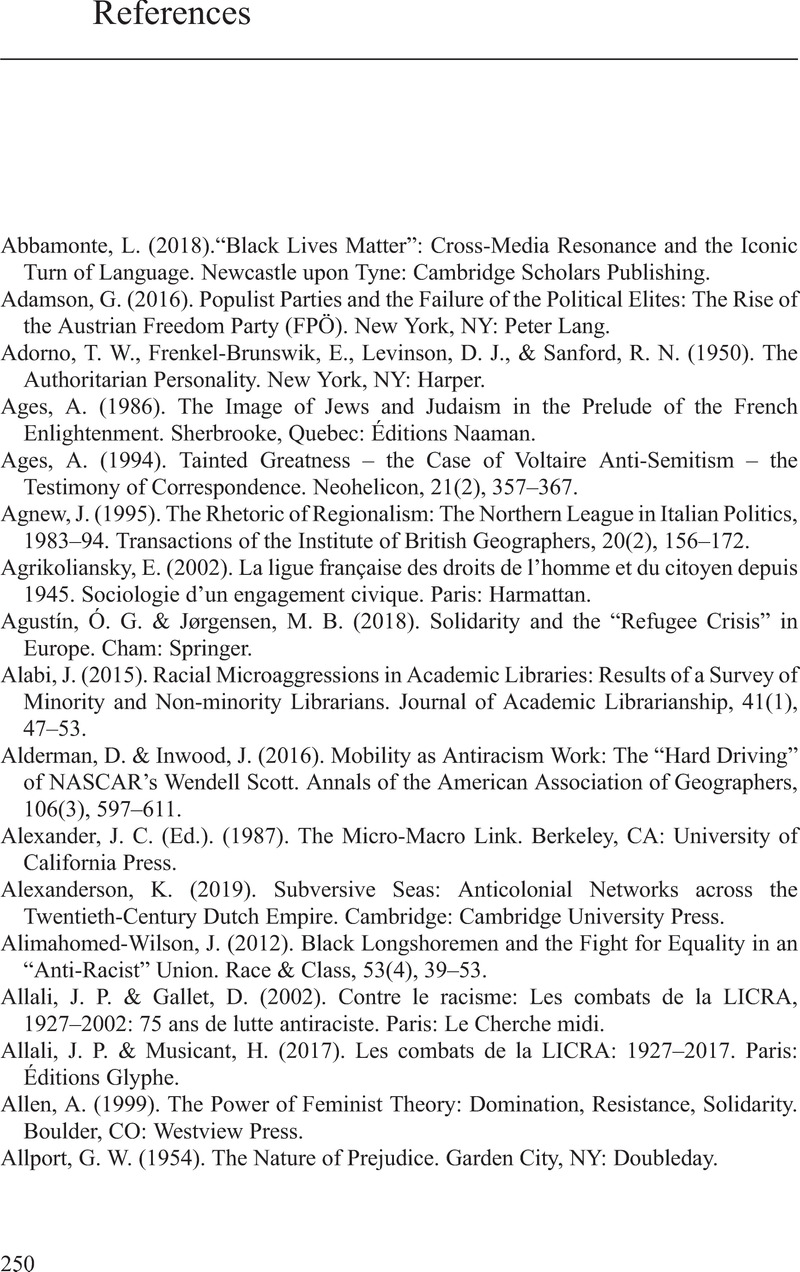Book contents
- Antiracist Discourse
- Antiracist Discourse
- Copyright page
- Contents
- Acknowledgments
- 1 Introduction
- 2 Theoretical Framework
- 3 First Writings against Slavery
- 4 Abolition Discourse of the Quakers
- 5 Black Resistance against Slavery and Discrimination
- 6 The Civil Rights Movement
- 7 Jewish Resistance against Antisemitism
- 8 Postwar Antiracist Discourse from UNESCO to Black Lives Matter
- 9 Conclusions
- References
- Index
- References
References
Published online by Cambridge University Press: 02 April 2021
- Antiracist Discourse
- Antiracist Discourse
- Copyright page
- Contents
- Acknowledgments
- 1 Introduction
- 2 Theoretical Framework
- 3 First Writings against Slavery
- 4 Abolition Discourse of the Quakers
- 5 Black Resistance against Slavery and Discrimination
- 6 The Civil Rights Movement
- 7 Jewish Resistance against Antisemitism
- 8 Postwar Antiracist Discourse from UNESCO to Black Lives Matter
- 9 Conclusions
- References
- Index
- References
Summary

- Type
- Chapter
- Information
- Antiracist DiscourseTheory and History of a Macromovement, pp. 250 - 285Publisher: Cambridge University PressPrint publication year: 2021

